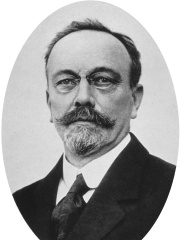
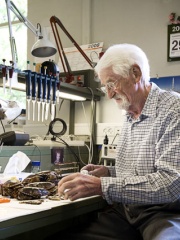
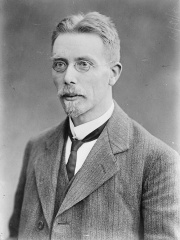
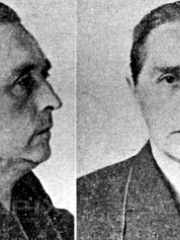
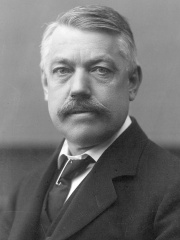
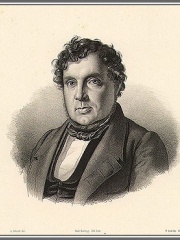
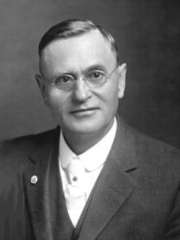
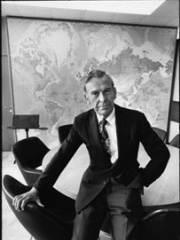
The Most Famous
PHYSICIANS from Denmark
This page contains a list of the greatest Danish Physicians. The pantheon dataset contains 726 Physicians, 9 of which were born in Denmark. This makes Denmark the birth place of the 20th most number of Physicians behind Ukraine, and China.
Top 9
The following people are considered by Pantheon to be the most legendary Danish Physicians of all time. This list of famous Danish Physicians is sorted by HPI (Historical Popularity Index), a metric that aggregates information on a biography's online popularity.

1. Johannes Fibiger (1867 - 1928)
With an HPI of 72.95, Johannes Fibiger is the most famous Danish Physician. His biography has been translated into 56 different languages on wikipedia.
Johannes Andreas Grib Fibiger (23 April 1867 – 30 January 1928) was a Danish physician and professor of anatomical pathology at the University of Copenhagen. He was the recipient of the 1926 Nobel Prize in Physiology or Medicine "for his discovery of the Spiroptera carcinoma". He claimed to have shown that the roundworm which he called Spiroptera carcinoma (but is correctly named Gongylonema neoplasticum) could cause stomach cancer (squamous cell carcinoma) in rats and mice. His experimental results were later proven to be a case of mistaken conclusion. While working at the Institute of Pathological Anatomy of University of Copenhagen, Fibiger discovered new roundworms in 1907 from wild rats. He suspected that the roundworms were responsible for stomach cancer in those rats. In 1913, he reported that he could experimentally induce cancer in healthy rats using the roundworms. His discovery was considered "the greatest contribution to experimental medicine" at the time. In 1926, he was nominated for the Nobel Prize in Physiology or Medicine along with Katsusaburo Yamagiwa, who had experimentally induced carcinoma by painting crude coal tar on the inner surface of rabbits' ears in 1915. However, they were considered undeserving, and the 1926 prize was not given. In the next year Fibiger alone was retrospectively chosen for the 1926 Nobel Prize. After his death, independent researches proved that G. neoplasticum cannot cause cancer. Tumours and cancer produced by Fibiger were due to vitamin A deficiency. Historical reassessment of Fibiger's data revealed that he had mistaken non-cancerous tumours for cancerous tumours. Erling Norrby, who had served as the Permanent Secretary of the Royal Swedish Academy of Sciences and Professor and Chairman of Virology at the Karolinska Institute, in 2010 declared Fibiger's Nobel Prize as "one of the biggest blunders made by the Karolinska Institute." Fibiger's research method on diphtheria is regarded as the origin of an important research methodology in medicine known as controlled clinical trial.

2. Jens Christian Skou (1918 - 2018)
With an HPI of 72.79, Jens Christian Skou is the 2nd most famous Danish Physician. His biography has been translated into 57 different languages.
Jens Christian Skou (Danish pronunciation: [ˈjens ˈkʰʁestjæn ˈskʌwˀ, - ˈkʰʁæs-]; 8 October 1918 – 28 May 2018) was a Danish biochemist and Nobel laureate.

3. August Krogh (1874 - 1949)
With an HPI of 72.71, August Krogh is the 3rd most famous Danish Physician. His biography has been translated into 61 different languages.
Schack August Steenberg Krogh (15 November 1874 – 13 September 1949) was a Danish professor at the department of zoophysiology at the University of Copenhagen from 1916 to 1945. He contributed a number of fundamental discoveries within several fields of physiology, and is famous for developing Krogh's principle. In 1920 August Krogh was awarded the Nobel Prize in Physiology or Medicine for the discovery of the mechanism of regulation of the capillaries in skeletal muscle. Krogh was first to describe the adaptation of blood perfusion in muscle and other organs according to demands through opening and closing the arterioles and capillaries. Besides his contributions to medicine, Krogh was also one of the founders of what is today the Novo Nordisk company.

4. Carl Værnet (1893 - 1965)
With an HPI of 64.84, Carl Værnet is the 4th most famous Danish Physician. His biography has been translated into 21 different languages.
Carl Peter Værnet (April 28, 1893 – November 25, 1965) was a Danish doctor at Buchenwald concentration camp and an SS-Sturmbannführer. Værnet attempted to cure homosexuality by implanting artificial hormone glands into male prisoners at Buchenwald. Although he was arrested after World War II, Værnet fled to Argentina where he practiced medicine until his death.
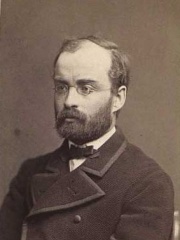
5. Carl Lange (1834 - 1900)
With an HPI of 61.80, Carl Lange is the 5th most famous Danish Physician. His biography has been translated into 18 different languages.
Carl Georg Lange (4 December 1834 – 29 May 1900) was a Danish physician who made contributions to the fields of neurology, psychiatry, and psychology. Born to a wealthy family in Vordingborg, Denmark, Lange attended medical school at the University of Copenhagen and graduated in 1859 with a reputation for brilliance. After publishing on the neurological pathologies of aphasia, bulbar palsy, tabes dorsalis, and pathologies of the spinal cord, he achieved world fame with his 1885 work "On Emotions: A Psycho-Physiological Study". In it, he posited that all emotions are developed from, and can be reduced to, physiological reactions to stimuli. Seemingly independently, the American William James had published a similar work the year before, but unlike James, Lange specifically stated that vasomotor changes are emotions. The theory became known as the James–Lange theory of emotion. In 1886 Lange published "On Periodical Depressions and their Pathogenesis," an exposé on the previously undescribed illness of periodic depressions without mania known today as major depressive disorder. He asserted that the disease was extremely common in his practice. Based on observations he made of his patients' urine, he hypothesized that the illness was related to an excess of uric acid in the blood and advocated for methods of reducing this substance, including the use of lithium. His recommendations were discarded by the psychiatric community, as was his nosological assertions of the uniqueness of the disease. Lithium was later found in 1949 to be an effective treatment for mood disorders, although the concept of a uric acid diathesis was fully discredited. But a connection of uric acid and depression is not without possibility. He died in Copenhagen in 1900 at the age of 65.

6. Christian Bohr (1855 - 1911)
With an HPI of 61.37, Christian Bohr is the 6th most famous Danish Physician. His biography has been translated into 24 different languages.
Christian Harald Lauritz Peter Emil Bohr (14 February 1855 - 3 February 1911) was a Danish physician, father of the physicist and Nobel laureate Niels Bohr, as well as the mathematician and football player Harald Bohr and grandfather of another physicist and Nobel laureate Aage Bohr. He married Ellen Adler in 1881.

7. Emil Aarestrup (1800 - 1856)
With an HPI of 61.02, Emil Aarestrup is the 7th most famous Danish Physician. His biography has been translated into 27 different languages.
Carl Ludvig Emil Aarestrup (4 December 1800 in Copenhagen – 21 July 1856 in Odense) was a Danish physician and poet, who had just one single volume of poetry published throughout his lifetime, yet this gave him a lasting place in Danish literature, due to the originality of the poems, as well as their persistent exploration of erotic themes, somewhat uncommon to the day.

8. Max Heindel (1865 - 1919)
With an HPI of 60.55, Max Heindel is the 8th most famous Danish Physician. His biography has been translated into 18 different languages.
Max Heindel (born Carl Louis von Grasshoff, July 23, 1865 – January 6, 1919) was an American Christian occultist, astrologer, and mystic.

9. Halfdan T. Mahler (1923 - 2016)
With an HPI of 54.76, Halfdan T. Mahler is the 9th most famous Danish Physician. His biography has been translated into 15 different languages.
Halfdan Theodor Mahler (21 April 1923 – 14 December 2016) was a Danish physician. He served three terms as Director-General of the World Health Organization (WHO) from 1973 to 1988, and is widely known for his effort to combat tuberculosis and his role in having shaped the landmark Alma Ata Declaration that defined the Health for All by the Year 2000 strategy.
People
Pantheon has 9 people classified as Danish physicians born between 1800 and 1923. Of these 9, none of them are still alive today. The most famous deceased Danish physicians include Johannes Fibiger, Jens Christian Skou, and August Krogh.
Deceased Danish Physicians
Go to all RankingsJohannes Fibiger
1867 - 1928
HPI: 72.95
Jens Christian Skou
1918 - 2018
HPI: 72.79
August Krogh
1874 - 1949
HPI: 72.71
Carl Værnet
1893 - 1965
HPI: 64.84
Carl Lange
1834 - 1900
HPI: 61.80
Christian Bohr
1855 - 1911
HPI: 61.37
Emil Aarestrup
1800 - 1856
HPI: 61.02
Max Heindel
1865 - 1919
HPI: 60.55
Halfdan T. Mahler
1923 - 2016
HPI: 54.76
Overlapping Lives
Which Physicians were alive at the same time? This visualization shows the lifespans of the 8 most globally memorable Physicians since 1700.

